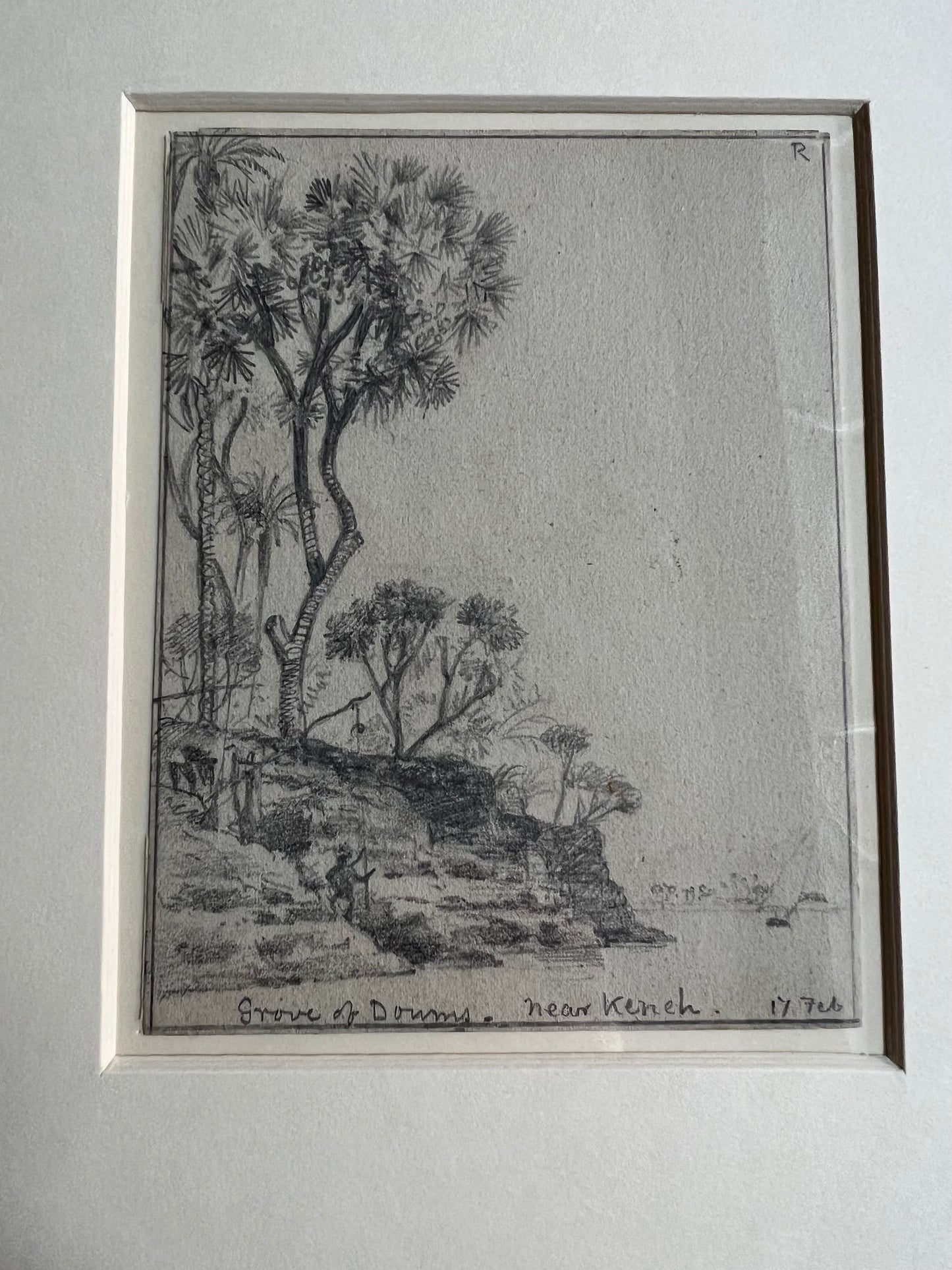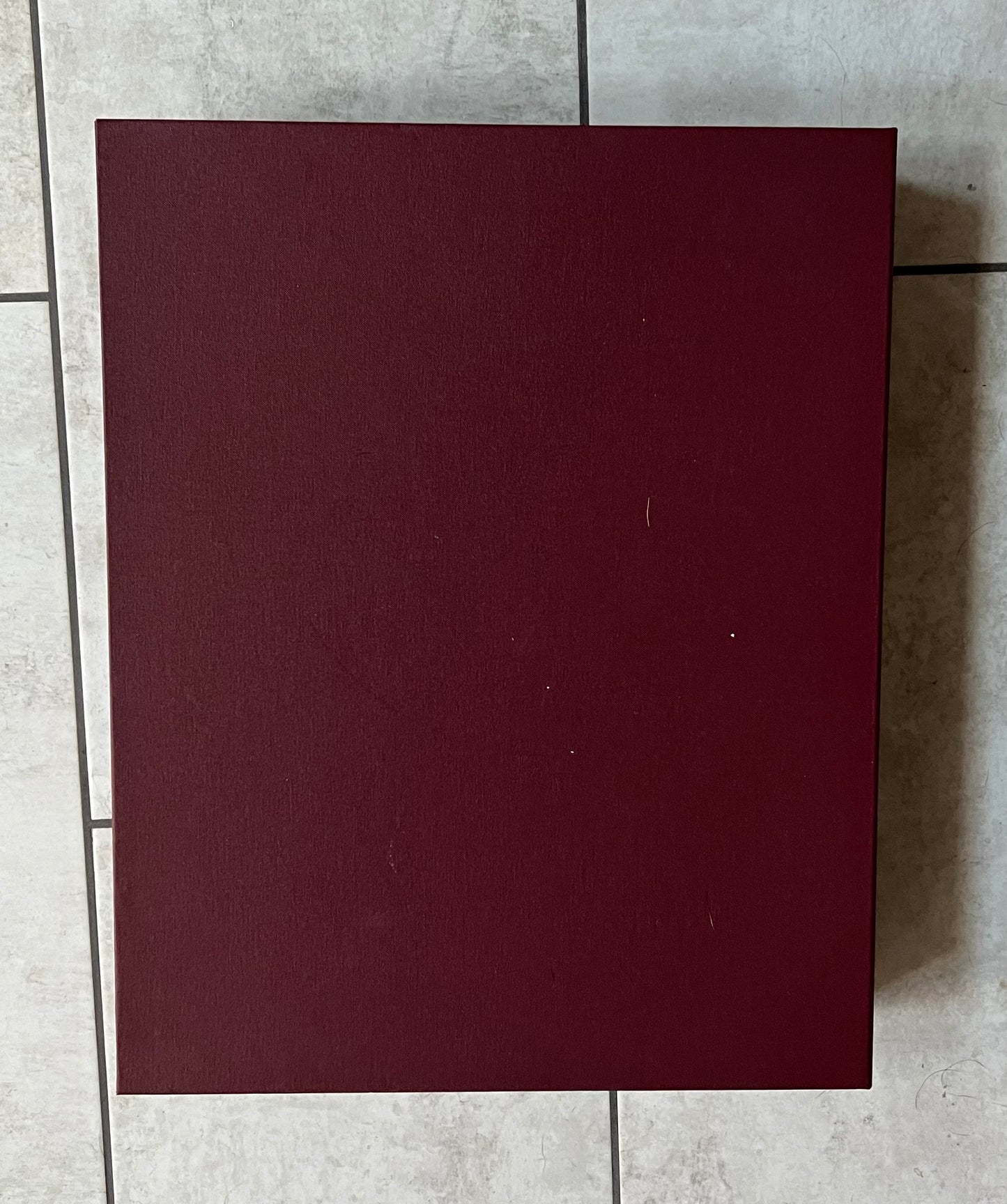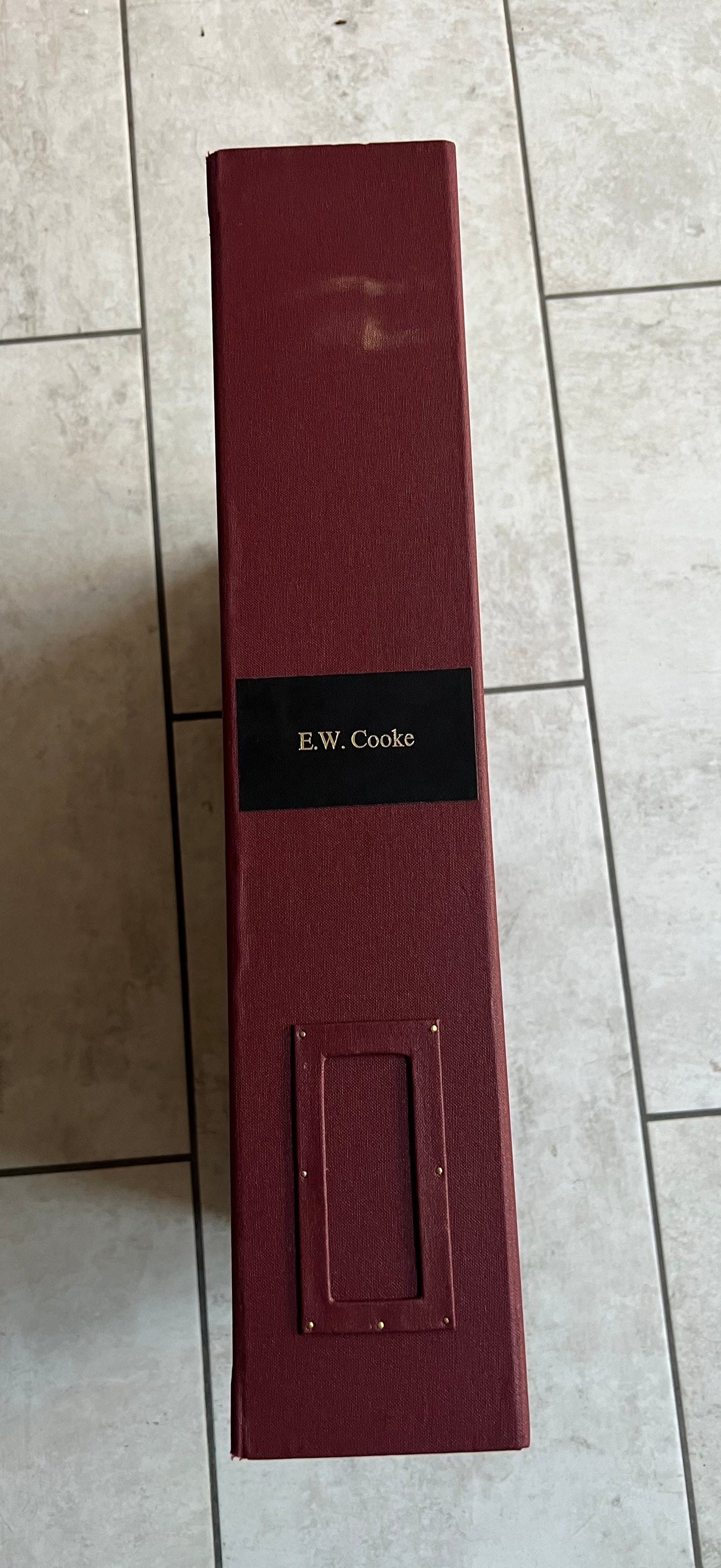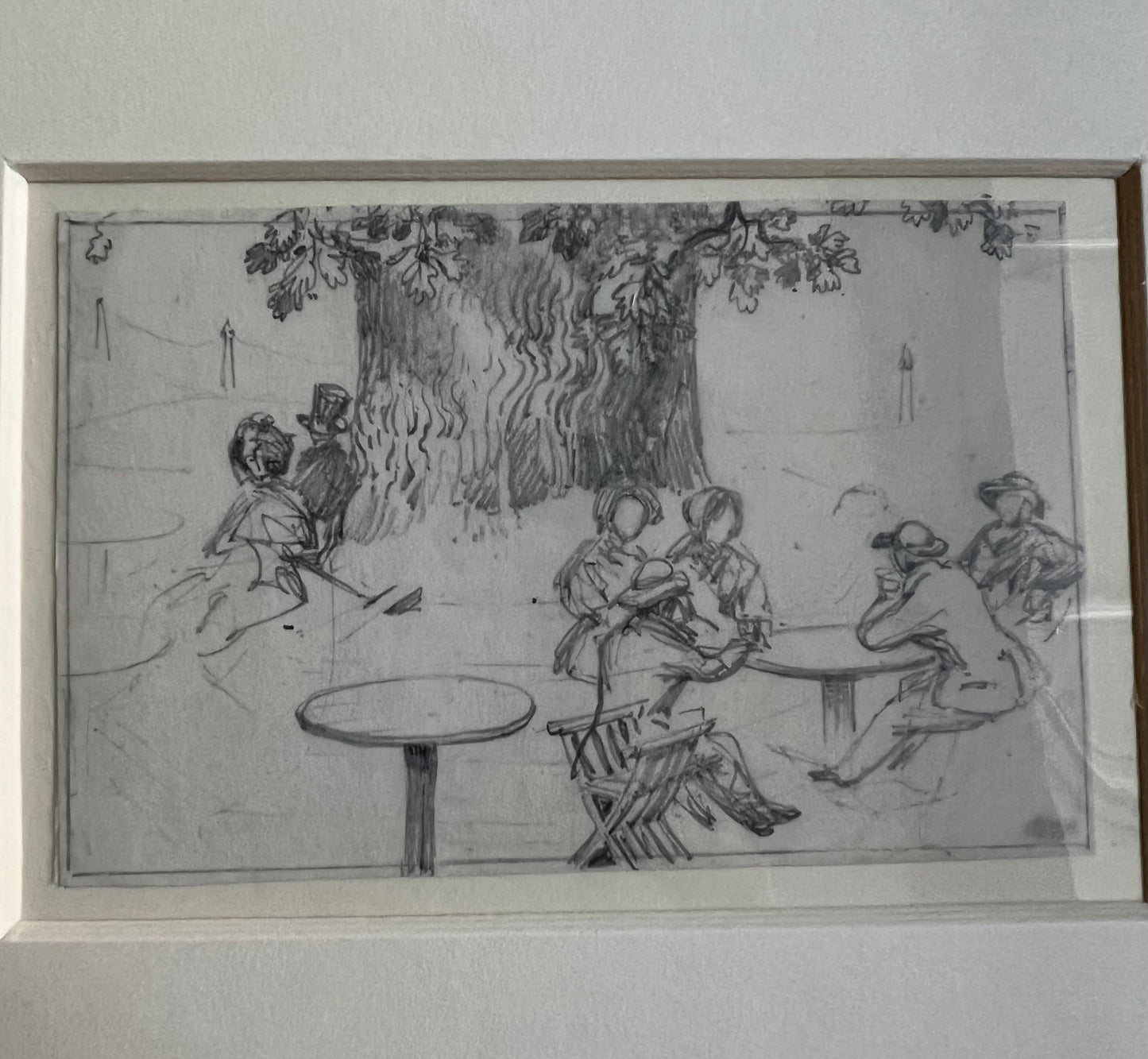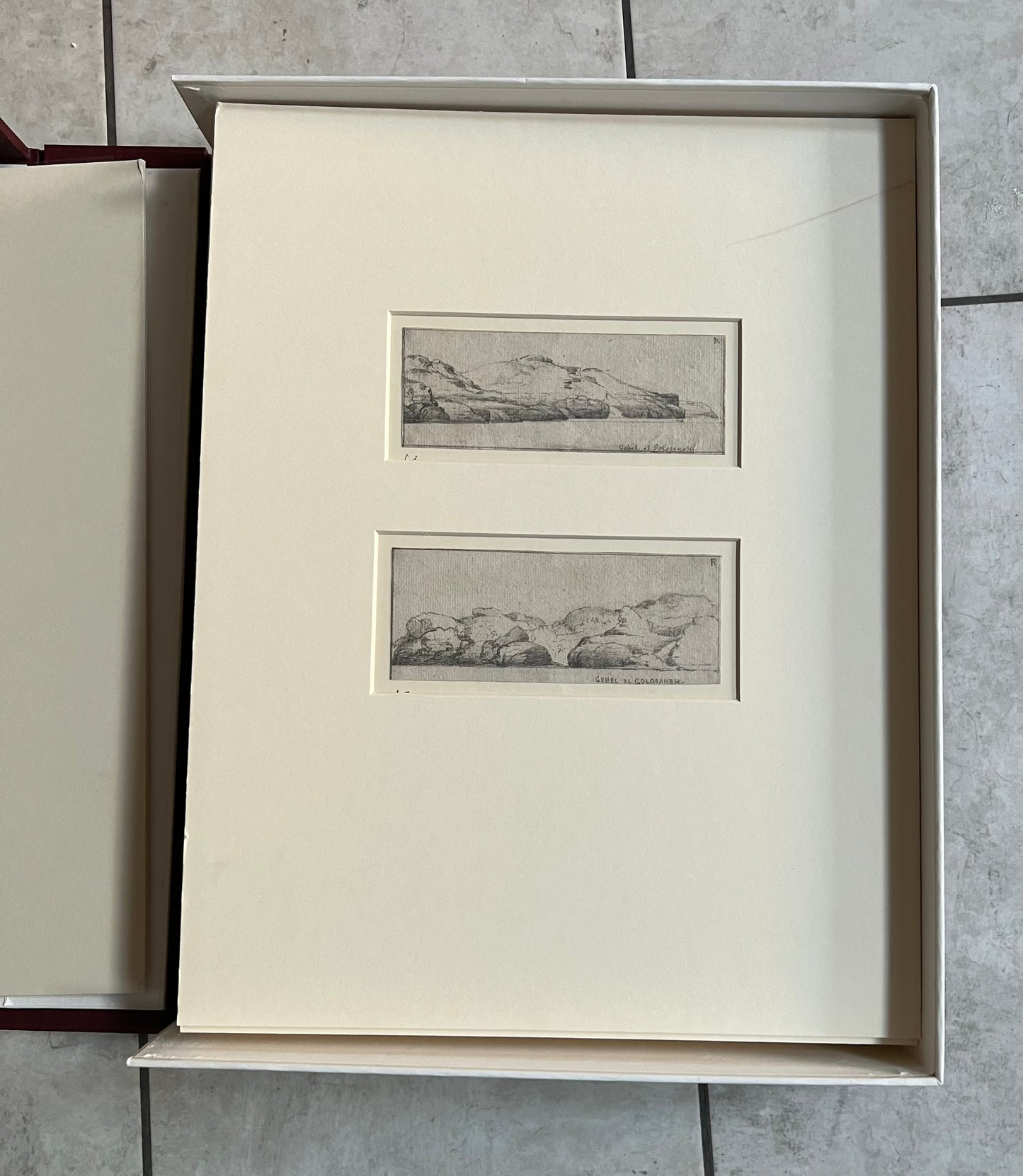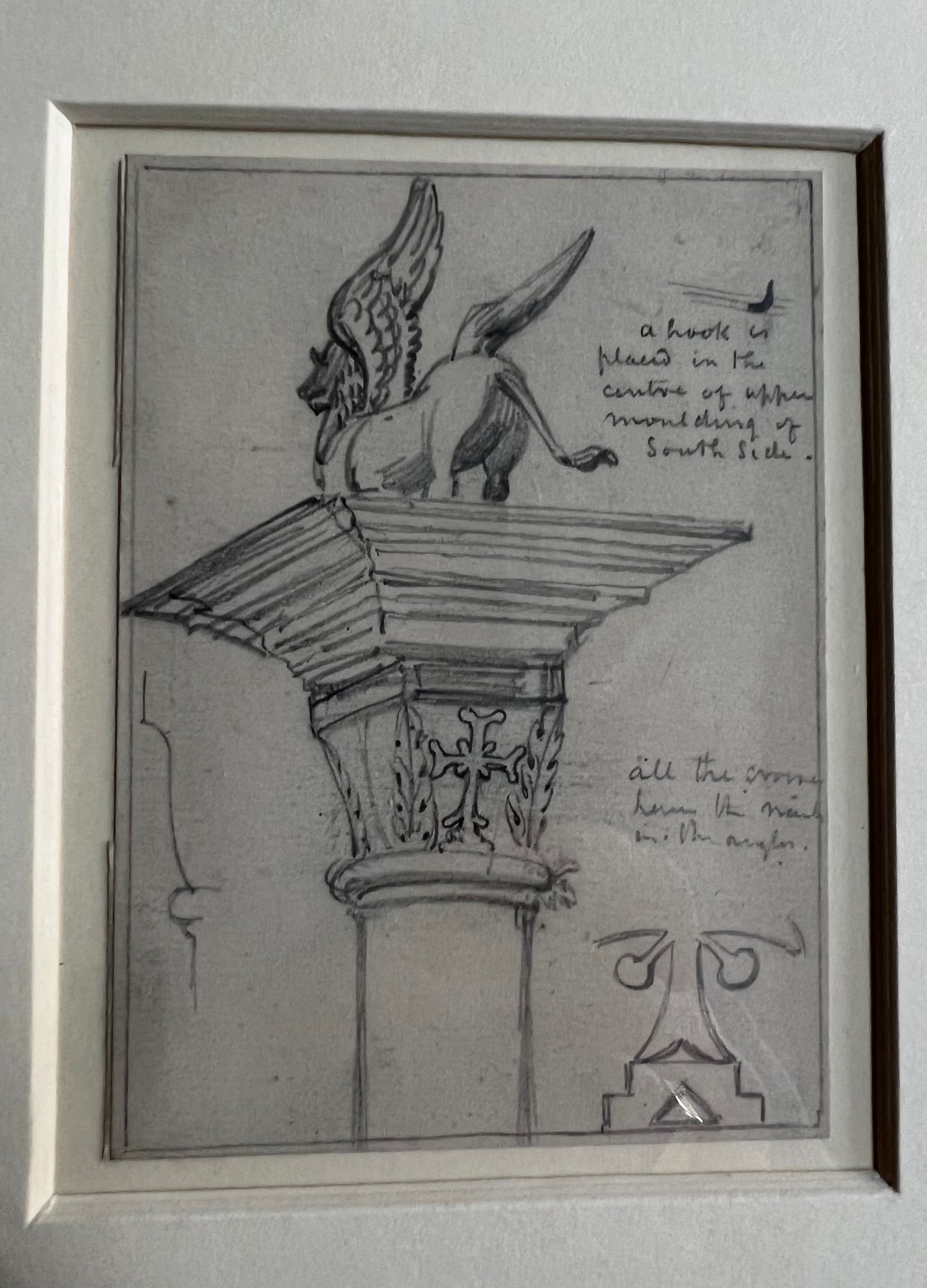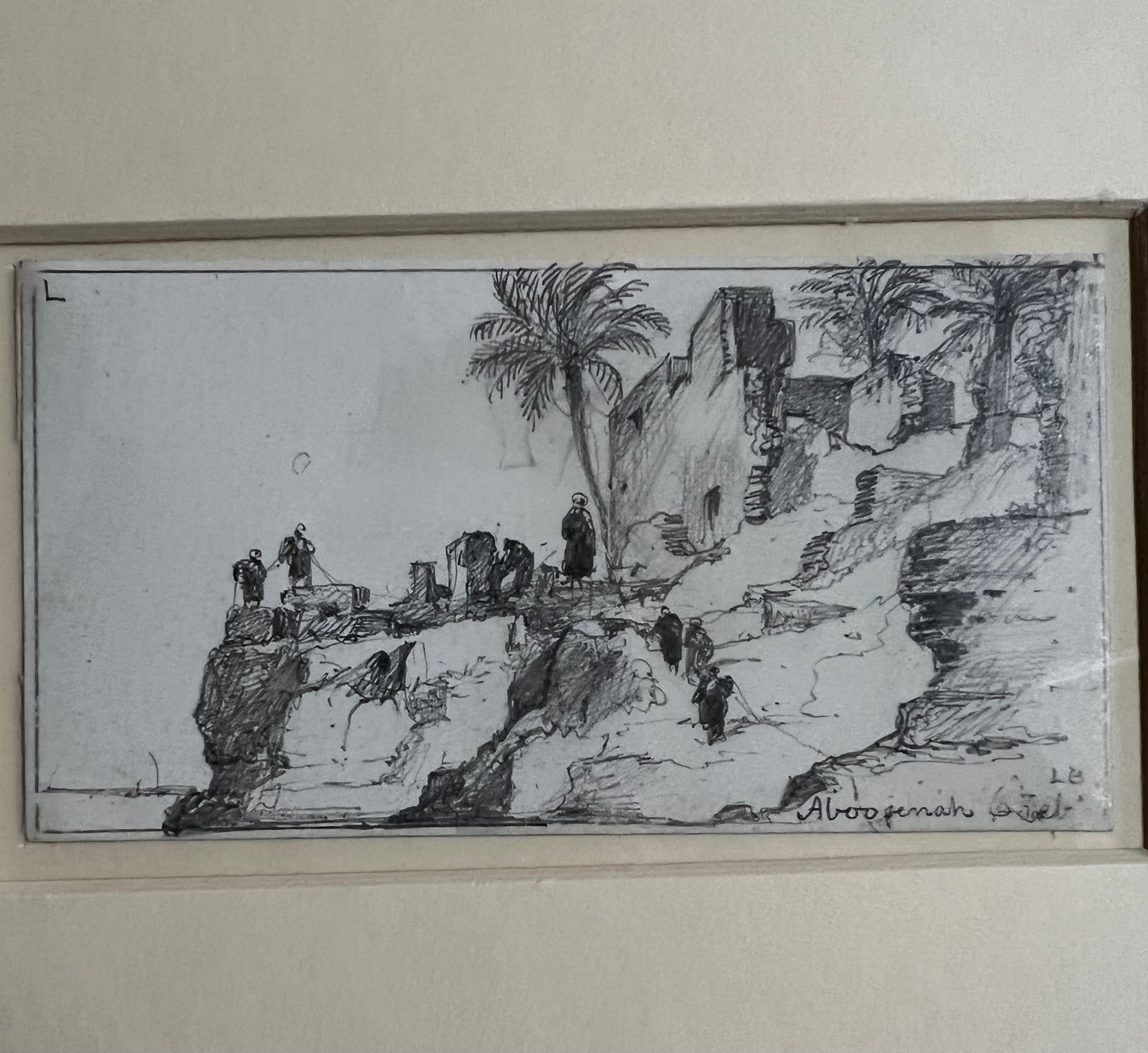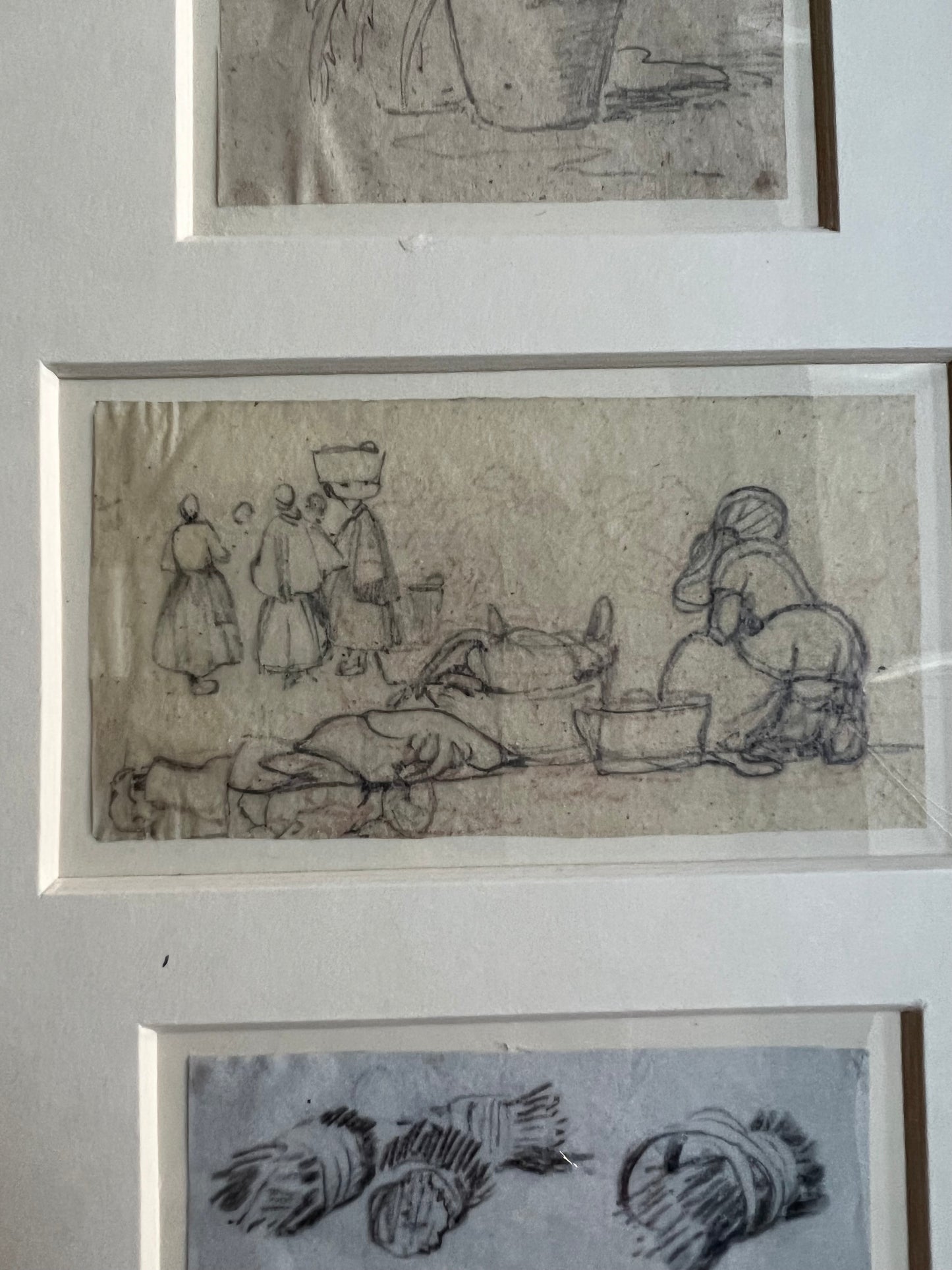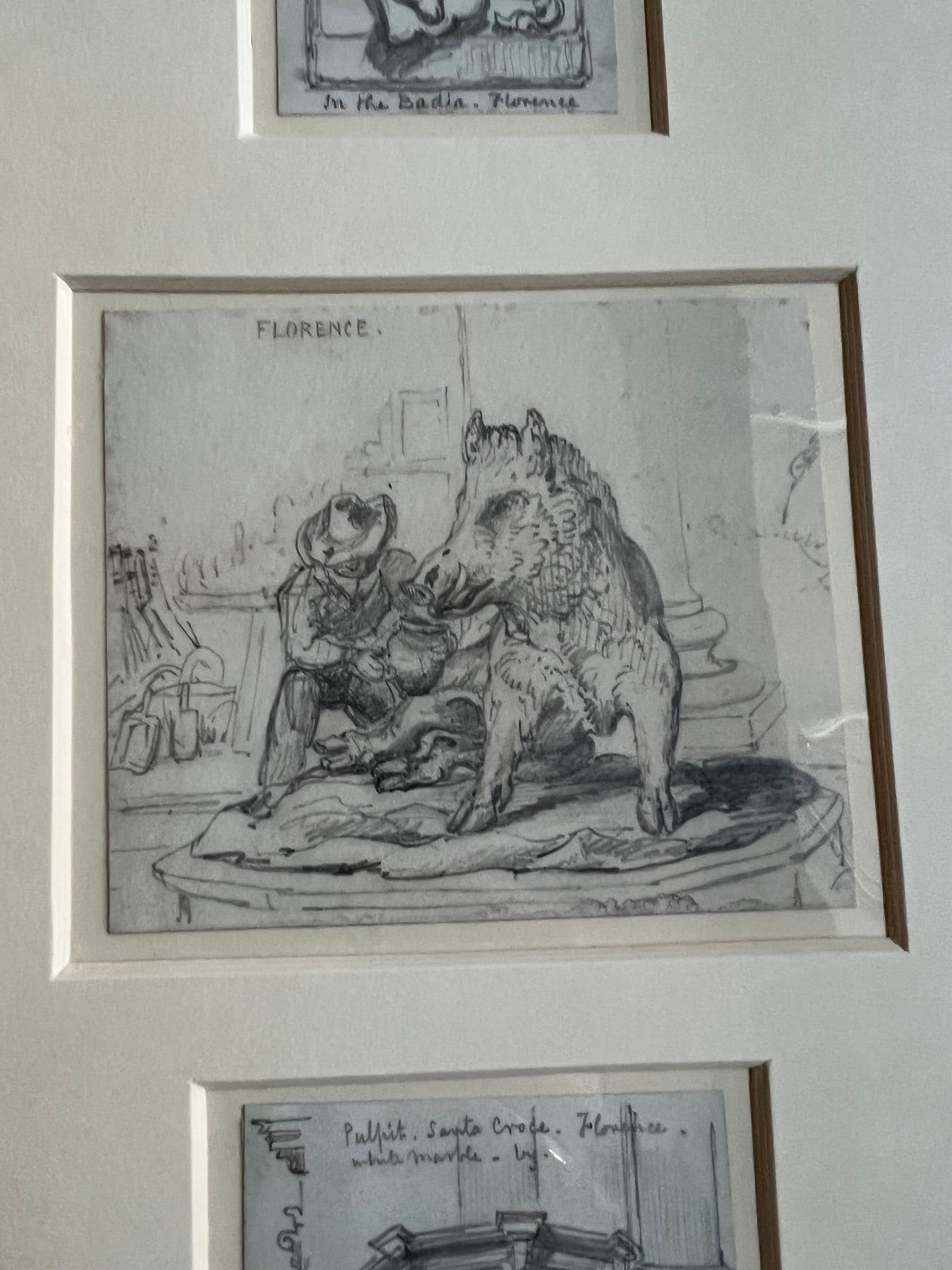Edward William Cooke RA, British 1811-1880 Collection of Drawings
Couldn't load pickup availability
Edward William Cooke RA, British 1811-1880
A collection of 88 pencil drawings contained in a purpose made modern folio box.
Size – 49 x 39cm Box
Comprising Egyptian landscapes, river views and artefacts including: Dendera; The Gate of the Nile; Philae; Gebel El Silsilah; Gebel Aboofayeda; Keneh; Bibbeh, along with views and architectural studies of Venice and figure studies and architectural studies executed in Rouen, Avignon, Capua, Rome, Ravello, Ferrara, Urbino, Florence, Trento and Capua including: The catacombs of Saint Sebastian, Rome; The Sistine Chapel, Rome; St Peter's, Rome; San Antonio, Padua; Door of Santa Maria del Orta, Venice; San Polo, Venice; San Marco, Venice; Details of Palazzo Pisani, Venice; and Capitals in the Palazzo Ducale, Venice, the majority inscribed with titles, some annotated with notes, and some dated variously 3 October 1851 to 27 February 1874, some annotated with numbers, pencil, some within a pencil border, on paper, six on tracing paper, one on blue paper, two on reverse of printed paper, four on card, 17.5 x 10.1 cm and smaller, eighty-eight (88), (mounted, unframed, many in common mounts).
Provenance: Anon. sale, Sotheby's, London, 10 July 1997, lot 147 (as ‘An album of sketches.’).; The Collection of Sir Nicholas Goodison.
Cooke was an inveterate traveller, visiting Europe on many occasions between 1824 and 1879 (for further details see J. Munday, E.W. Cooke 1811-1880 A Man of his Time, Woodbridge, Suffolk, 1996, p. 364, appendix 4) and a dedicated diarist, beginning when he was 17 and continuing until a few weeks before his death. His itinerary on his many foreign trips is carefully recorded and these match up with the dates on his sketches. The drawings which are dated October are from his second Venetian tour in 1851. He left Folkestone on 11 August, travelling to Paris and then on to the Swiss Alps, journeying on to the Italian lakes and then Verona and Venice where John and Effie Ruskin were also staying. He remained there before returning home in December.
Thirteen drawings are from a three-and-a-half-month trip, beginning on 1 January to Egypt, see Munday, pp. 207 for a detailed itinerary. Cooke’s expedition to Egypt was to be a geological-cum-antiquarian excursion as well as a painting trip along the Nile. He travelled on the P & O steamer Simla, in the company of Professor Richard Owen and Mr John Fowler, engineering adviser to Khedive Ismail Pasha and encountered other British visitors such as the artist Hercules Brabazon Brabazon (1821-1906). Cooke was clearly delighted by the sites of Egypt, and he planned another painting trip there at the end of the same year.
The remaining sketches are figure and architectural studies, many of buildings in Venice and these show his continued interest in architecture. His obituary, published in The Gardener’s Chronicle, 10 January 1880 concluded, ‘In his pictures… the work by which he achieved fame and fortune-his mental characteristics may be traced- his love of truth, his accurate observation and fidelity in reproducing them. Many of his pictures are scientific lesson-books: the dip of the strata, the grains of the sand, the shapes of the leaves, the curvature of the trunks of the Palm trees, the form of rain clouds, the line of the waves, and hundreds of such instances betoken, not only the artist, but the man of science. There is an amount of absolute truth about them, apart from imagination, which will give his picture a permanent value beyond that of many of his contemporaries.’ The present group of sketches, carefully preserved and mounted, reveal Cooke’s skilful draughtsmanship and the discerning mind of an archetypal enquiring Victorian gentleman.
Edward William Cooke was born into an artistic family, the son of the engraver George Cooke (1781-1834). He was a talented child artist and by the age of nine was already executing wood engravings of plants for publication. At the age of fourteen he met Clarkson Stanfield, RA (1793-1867) and began a lifelong interest in sketching boats. He also began to study architecture under Augustus Pugin (1812-1852), but did not pursue this as he preferred marine subjects. He was elected an Associate of the Royal Academy in 1851 and a full member in 1864. The other great interests in his life were botany and geology, and he was elected a Fellow of the Linnaean Society in 1857, Fellow of the Geological Society in 1862 and Fellow of the Royal Society (an unusual accolade for a painter) in 1863.
